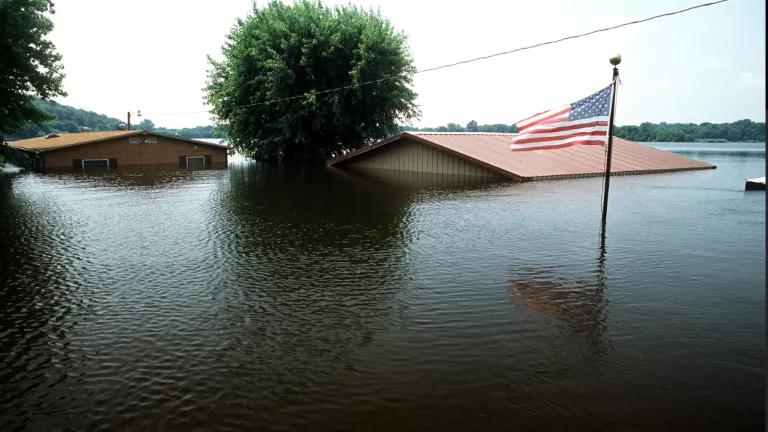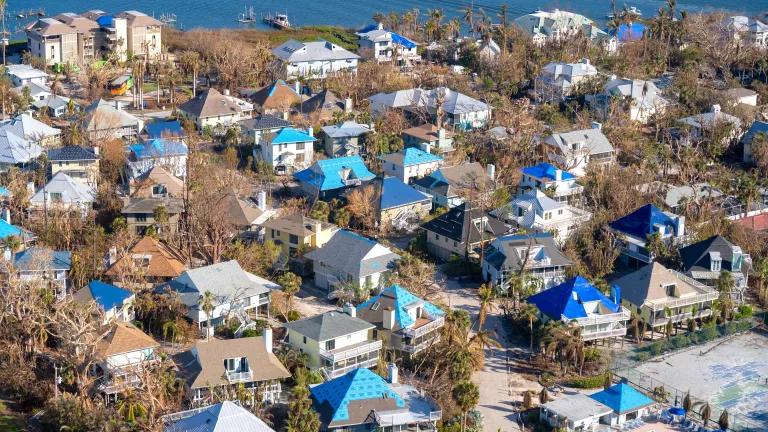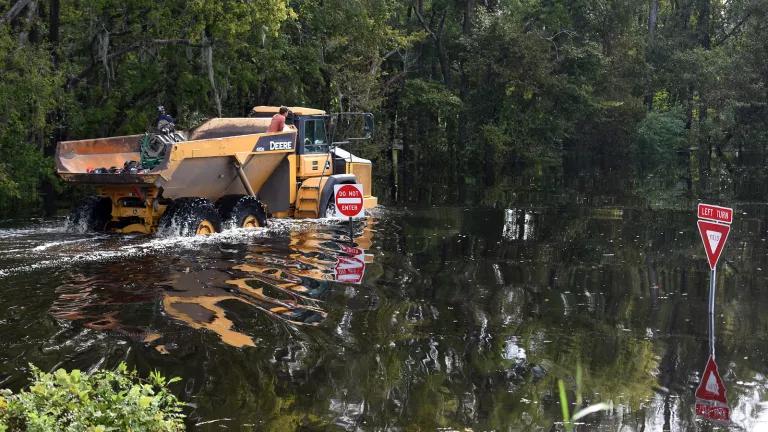Flood Protection Standard Needed
As the seas rise and rainstorms become more extreme, the time to require all federally funded infrastructure be prepared for the floods of the future is now.

***Since publication of this blog, President Biden explicitly reinstated Executive Order 13690 and the Federal Flood Risk Management Standard. President Biden’s action will help to protect lives, lower disaster costs, and save taxpayer dollars by ensuring public infrastructure is built to withstand the climate of the future. ***
Heavier rains, intensifying coastal storms, and rising seas—the impacts of climate change—are making flooding more frequent and severe. Absent a far-reaching requirement that federally funded infrastructure account for such impacts, millions of Americans will continue to increasingly suffer as their hospitals, schools, and drinking water facilities flood.
The Biden administration understands the need to ensure a federal flood protection standard is in place before bold new investments are made in the nation’s infrastructure. The necessity of doing such was made clear in the American Jobs Plan: “Every dollar spent on rebuilding our infrastructure during the Biden administration will be used to prevent, reduce, and withstand the impacts of the climate crisis.”
The Obama-era Federal Flood Risk Management Standard (FFRMS) had required federally funded infrastructure to be built with a higher margin of safety against extreme floods and sea level rise. However, former President Trump revoked the flood protection standard just 10 days before Hurricane Harvey struck in August 2017.
Unfortunately, despite intentions to reverse President Trump’s harmful actions, the White House has indicated that the FFRMS is not back in place. Despite repealing Trump’s executive order that, in turn, repealed Obama’s executive order establishing the standards, the FFRMS has not been reinstated as NRDC previously thought and was reported in news outlets.
The Biden administration should act expeditiously to overcome these bureaucratic hurdles and put the standards back in place.
Two options to achieve such for the Biden administration would be to: (1) issue an executive order explicitly reinstating the FFRMS and directing all federal agencies to continue with implementation of the standard as previously undertaken prior to its revocation, or (2) develop a new flood protection standard that clearly specifies how agencies should account for future flood risk, especially the impacts of sea level rise, in the siting and design of infrastructure investments.
As the seas rise and rainstorms become more extreme, the time to require all federally funded infrastructure be prepared for the floods of the future is now. The Biden administration has made clear its commitment to making the nation more resilient to the impacts of climate change.
A new federal flood protection standard would help make that commitment a reality.




